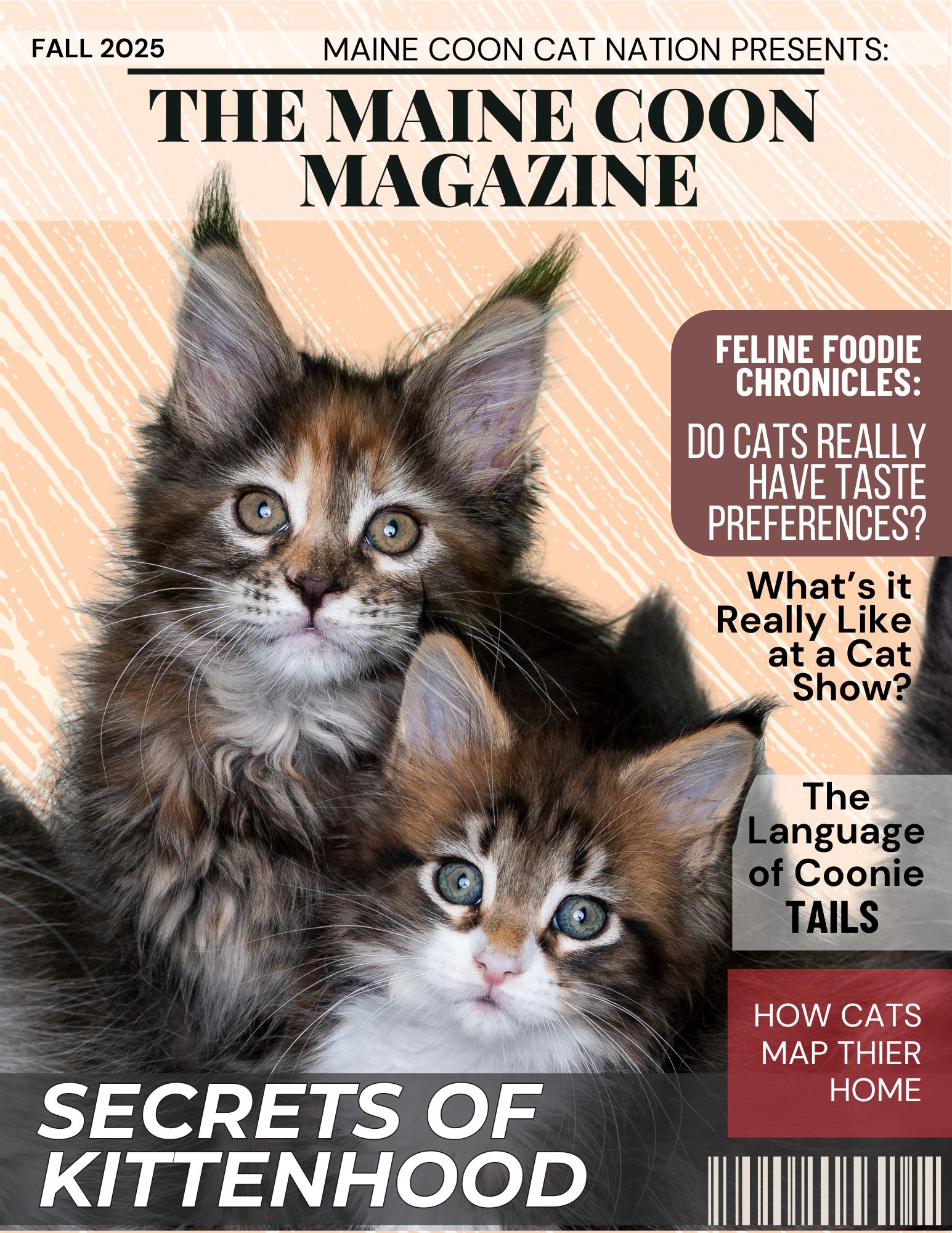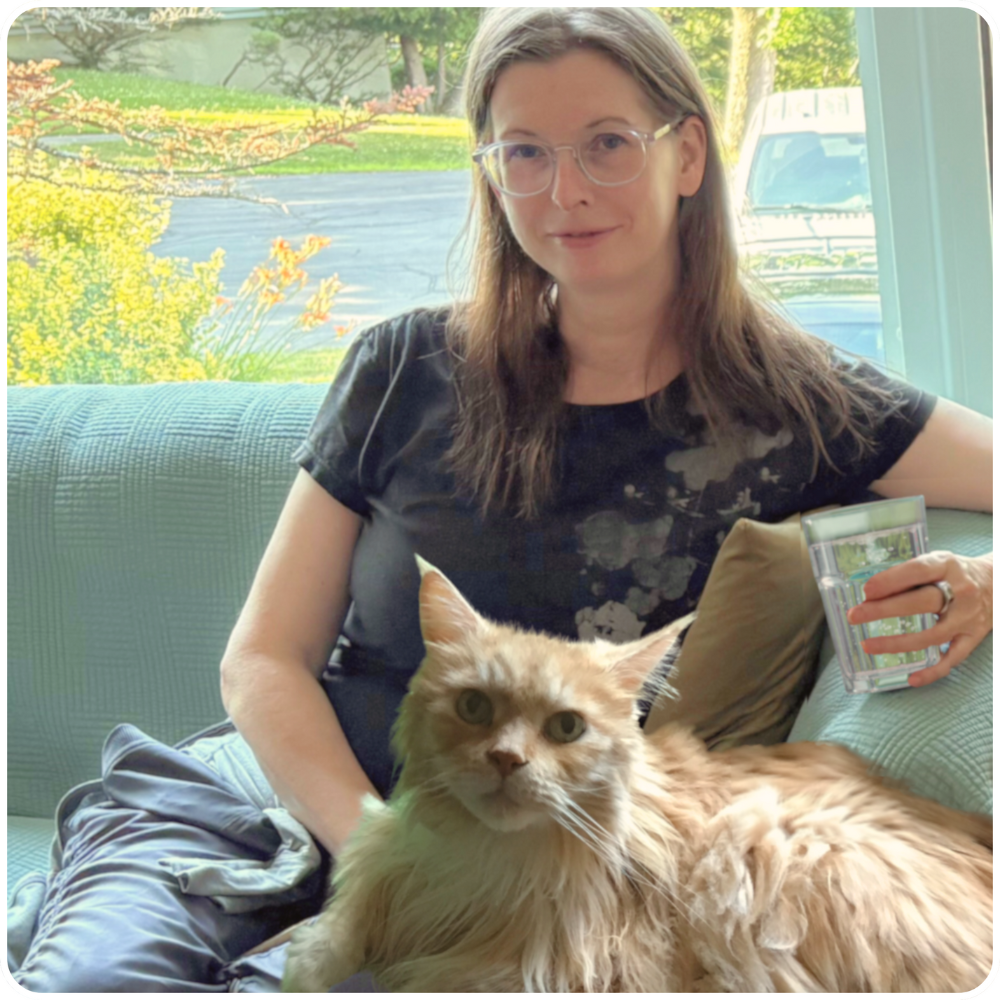- Home
- Maine Coon Kittens
- The Newborn Kitten Stage
Newborn Maine Coon Kittens
What Breeders See in the First Weeks
What Are Newborn Maine Coons Really Like? It's hard to imagine our big, fluffy Coonies ever fitting in the palm of a hand, but every one of them started out that tiny!
If you like this, you'll love our fun, free Daily Digest!

If you like this, you'll love our fun, free Daily Digest!

And if you're waiting for your breeder to send that "they’ve arrived!" email, you might be curious about what's happening behind the scenes right now with those adorable newborn Maine Coons.
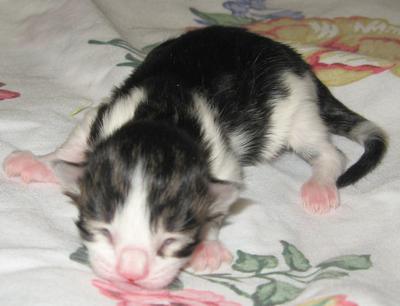 One Day Old
One Day OldHow Small Are We Talking?
Despite their reputation as gentle giants, newborn Maine Coons are surprisingly small.
They usually weigh in at 85-115 grams (about 3-4 ounces). At birth, their eyes are closed, ears are folded, and their fur is soft but still "kitten short."
Life in the First Days
During this stage, breeders play a crucial role.
Newborn Maine Coons can't regulate their body temperature, so they rely on their mother's warmth (and sometimes a heat source in the nest).
They nurse frequently, usually every 1-2 hours, and their little round bellies are the best sign that they're getting enough.
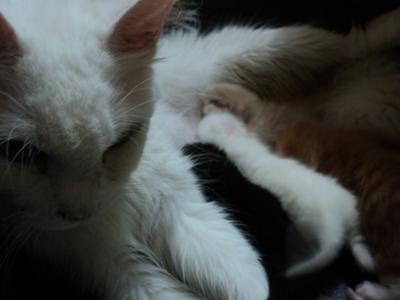 Coockie and Babies
Coockie and BabiesAbout Nursing
Most newborn Maine Coons instinctively find their way to a nipple within minutes of birth, guided by the warmth of their mother's belly, the scent of milk, and her gentle nudging. However, not every kitten gets it right away.
In very large litters (Maine Coons can have 6–8+ kittens), competition for the prime nipples is fierce, with the strongest kittens grabbing the best spots, usually those closest to the mother’s head, where it’s warmer and safer.
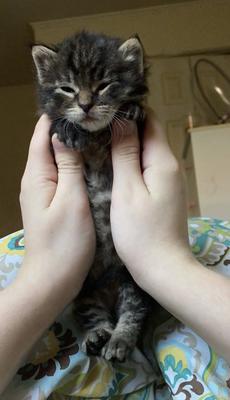
Breeders often rotate kittens so smaller ones get a turn at the better spots.
If needed, they’ll help guide a kitten's mouth to a nipple to ensure a proper latch.
In rare cases, if a kitten can't latch or the queen isn't producing enough milk, breeders may supplement with kitten formula.
A healthy kitten nurses every 1-2 hours in the early days, and you can tell they’re doing well if they have round, full bellies and sleep quietly between feedings.
If a kitten is crying constantly, not latching, or losing weight, they'll need immediate attention.
The "Runt of the Litter"
You've probably heard the term "runt of the litter." It's a real thing, but often misunderstood.
In cat litters, the runt isn't necessarily the youngest or genetically different; it's simply the smallest kitten at birth.
Sometimes, the runt's size difference is due to being positioned differently in the womb, which results in less access to nutrients. Other times, it's simply natural variation.
What makes a runt stand out?
They can be visibly smaller, weaker, or slower to compete for a nipple. While most will catch up just fine, some need extra help, especially in those first few days.
How breeders help runts:
- Monitoring weight daily: Weighing twice a day for the first week to make sure the kitten is gaining steadily.
- Supplemental feeding: Bottle or syringe-feeding kitten milk replacer if the runt can’t nurse enough.
- Nipple access: Placing the runt at a back nipple (where milk flow is strongest) and holding them there so they don’t get pushed off by bigger siblings.
- Warmth and energy: Ensuring the kitten is warm before feeding, as chilled kittens can’t digest milk well.
Most runts thrive with a little TLC. And in some cases, they grow into the biggest, most robust cat of the bunch! Starting small doesn’t always mean staying small.
One sweet thing about runts is that all that early hands-on care often makes them extra people-focused.
Runts often spend more time in human hands because they need more frequent feedings and warmth.
This can create a deep bond, and many owners find their runt follows them like a shadow or loves snuggling more than their littermates.
Kittens grow so fast in those first few weeks. Want to learn about each stage of their growth? Visit our As They Grow Hub for detailed information on what to expect as they develop.
Changes You Can’t See in Photos
Even in that first week, so much is happening:
By Two Weeks
- Ears begin to unfold.
- Scent recognition locks in, and kittens learn who "mom" is.
- Muscles start to strengthen as they wriggle toward warmth and milk.
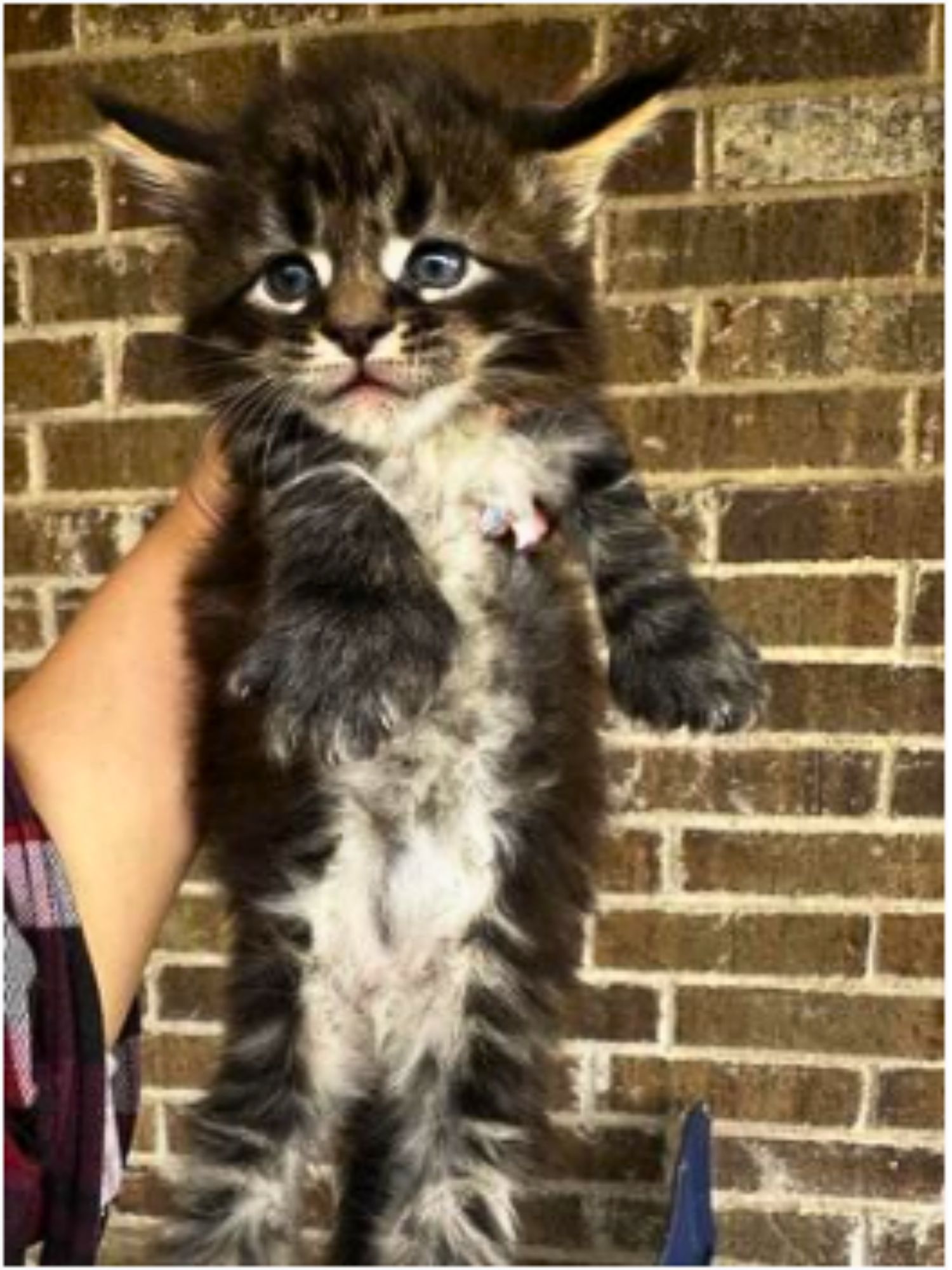 Baby Neo with blue eyes
Baby Neo with blue eyesEyes open (often a deep blue), and personalities begin to peek through.
Maine Coons tend to be curious right from the start, even if they still look a bit wobbly.
At this point, you may start noticing your kitten’s developing personality. For more details on how Maine Coons grow and develop, take a look at our Maine Coon kitten development page.
For Those on the Waitlist
Breeders often wait until kittens are several weeks old before visitors are welcome, partly for health reasons and partly because newborn Maine Coons need time to grow before handling.
But knowing what’s happening now - the tiny squeaks, the careful weighing, the watchful mama - can make the wait even more exciting.
Whether your Coonie is 12 weeks or 12 years old, it’s sweet to picture that once upon a time, they fit in the palm of a hand, with a little button nose and a mew you could barely hear.
By two weeks, your kitten will have changed quite a bit!
To see how they’ll develop over the next few months, check out our growth chart, which tracks their progress through each stage.
Community Newborn Maine Coon Stories
We love hearing from other breeders and owners about those early kitten days.
Below are some real stories from our community about newborn Maine Coons. Each one gives a peek into what it’s like when those little ones first arrive - full of tiny moments that make all the difference.
Check them out, and if you have a story to share, we'd love to hear it!
First-Time Maine Coon Mama
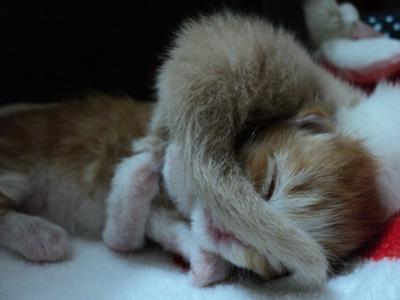
Heidi Mathias of Sons of Horus Cattery in Brazil shares her first-time queen, Coockie, saying:
"She is a sweet mama and very proud of her four kittens: Odin, Beowulf and Siegfried (the boys) and Mist (the only girl)."
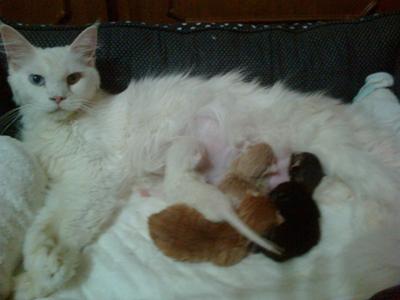 Cookie and her first newborn Maine Coon litter
Cookie and her first newborn Maine Coon litterYellowstoneCoon Babies
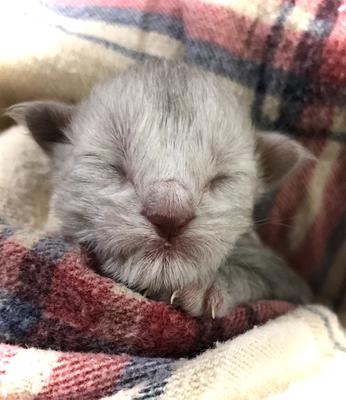
Jessica Zerr of YellowstoneCoon Cattery in Pennsylvania shared the tiniest, newest Maine Coon face you could imagine!
